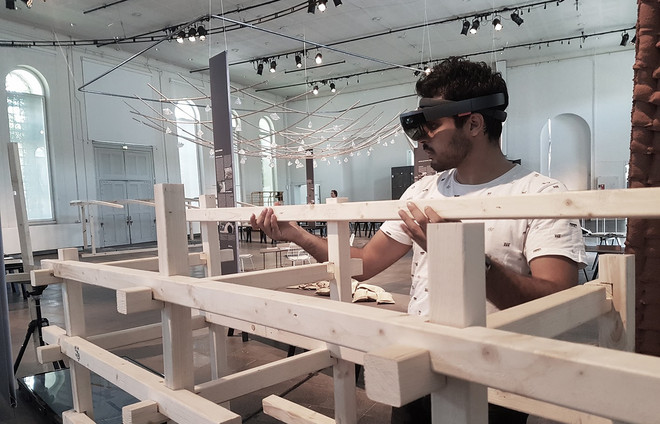
Innochain

The InnoChain ETN network is a shared research training environment examining how advances in digital design tools challenge building culture enabling sustainable, informed and materially smart design solutions. The network aims to train a new generation of interdisciplinary researchers with a strong industry focus that can effect real changes in the way we think, design and build our physical environment.
The programme investigated the extended digital chain as a particular opportunity for interdisciplinary design collaboration. Challenging the traditional thinking of design as a linear process of incremental refinement, InnoChain identified three axes of design innovation potential communication, simulation and materialisation appearing as distributed and interdisciplinary activities across the design chain. Situating feedback between design processes as a key concern for developing holistic and integrated design methods, the network developed new interdisciplinary design methods that integrate advanced simulation and interface with material fabrication.
Innochain projects worked on the cutting edge of computational design across building practice. The project results develop successfully a new collaborative practice enabled by computational advances that radically rethinks what the digital chain can be. Where the ESR projects were necessarily prototypical, their results and the continuing work of the ESRs on their topics beyond Innochain, show the creation of foundational methods and technologies needed for a sector wide change reshaping how the wider partnership within building practice works together. In this way the aim of Innochain to train a new generation of researchers that help to solve the pressing questions of the profession was reached.
Progress and Results
With a strong inter-sector focus, InnoChain connects “research in practice” with “research in academia”. Assembling 6 internationally recognised academic research environments leading research into computational design in architecture and engineering and 14 innovation pioneering industry partners from architecture, engineering, design software development and fabrication, the programme will establish a shared training platform for 15 early stage researchers. The network created a structured training programme focussed on supervision of individual research projects, an inter-sector secondment programme as well as collective research events including workshop-seminars, colloquia, winterschool and research courses that provide a unique opportunity for young researchers to obtain new knowledge and skills positioning them between strong innovative research practice and influential industrial impact.
Innochain was structured around three major challenges for the building industry related to the extended digital chain: Communicating Design (WP3), Simulation for Design (WP4) and Materialising Design (WP5).
WP3 addressed the current strict separation between design, engineering and execution in the building sector, a division which has been identified as the biggest obstacle for innovation. In order to tackle this, the work package developed integrated methods, which are oriented towards the specific processes in architecture and enable an open and feedback oriented communication between the disciplines. The projects in the work package did this through three different strands investigating:
1. New workflows and shared platforms.
2. New ways to manage and design with information.
3. The integration of novel practices with professional practice.
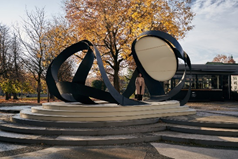
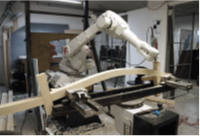
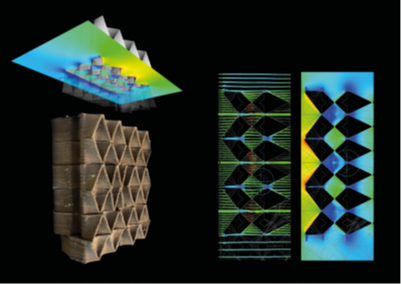
WP 4 addressed the integration of simulation into the design chain. Where existing practice places simulation after design, the ability to simulate performance as part of design exploration is identified as having a central impact on the analysis and specification of material systems and their fabrication driving new practices of form finding. WP 4 develops three different research trajectories examining how analysis and simulation can extend the digital design chain.
1. Analysis of material behaviour.
2. Simulation for fabrication.
3. Interfacing simulation with design.
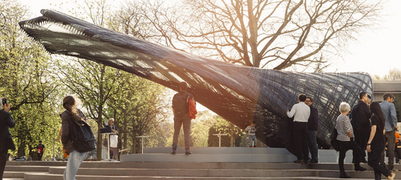

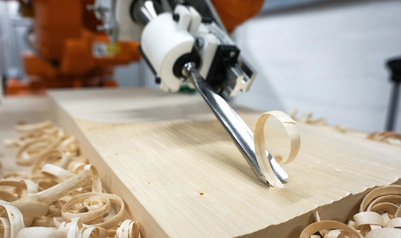
WP 5 addressed the ability to use the conceptualisation of the extended digital design chain as a means of ideating novel fabrication methods that rethink the material systems of architectural construction. Here, the outdated paradigm of material standardisation and the positioning of architecture as the assembly of pre-defined material systems is challenged through the creation of new prototypical methods for the non-standardisation of material into on- and off-site fabrication. WP5 develops three research trajectories examining new methods of fabrication and their associated digital methodologies for driving specification and assembly information:
1. Additive manufacturing through 3D deposition
2. Material Behaviour as Design Driver
3. Design for Assembly.
Progress beyond the state of the art and expected potential impact
The individual ESR projects have produced tangible results that have impact on the community and industry. These have been published widely through more than 49 scientific publications at leading conferences and led to public demonstration at fairs and research exhibitions addressing broad inter-sector audiences. Innochain has had the ability to lead discourse within the community through events including the international conference “Expanding Information Modelling for a New Material Age, three international research exhibitions and the final edited volume publication “Design Transactions”.
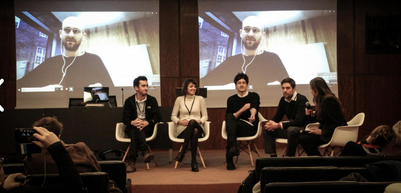

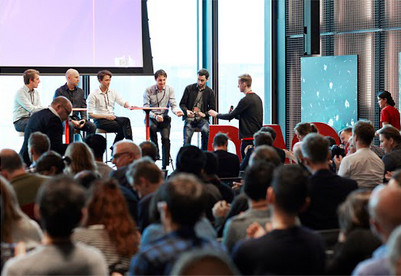
The way in which Innochain integrated research in academia with research in practice is novel for the building sector. After four years the project has become internationally recognised. Innochain as a whole has been exhibited at the Venice Biennale 2016, and its work has been invited to exhibit at major venues of the field, such as the Milano Design Week 2019 or the London Design Week 2018. Innochain strongly informed the orientation and setup of new research facilities: as the 6000sqm UCL at Here East high tech facilities and the Large Scale Construction Robotics Laboratory at University Stuttgart, the questions and methods of Innochain served as template for new research frameworks, as the Centre of Excellence of University Stuttgart and the results of ESR projects led to new research projects, such as the danish Predicting Response and the UK based AEC Delta Mobility - with a now funded volume of 36.548.793€.

Innochain succeeded in fostering Innovation and impact beyond the period of the ESR projects. The scope of the specifically developed Transferable Skills training courses with their focus on innovation opened the eyes of the ESRs for career paths that step beyond the established succession from PhD, to Post Doc, researcher or employment in a company. The innovation training in courses and individual counseling by the beneficiaries and with project partners, supported ESRs in the development of successful startups, funding schemes, positions as leaders in industry or even the move to research in other Industries as Automotive.














